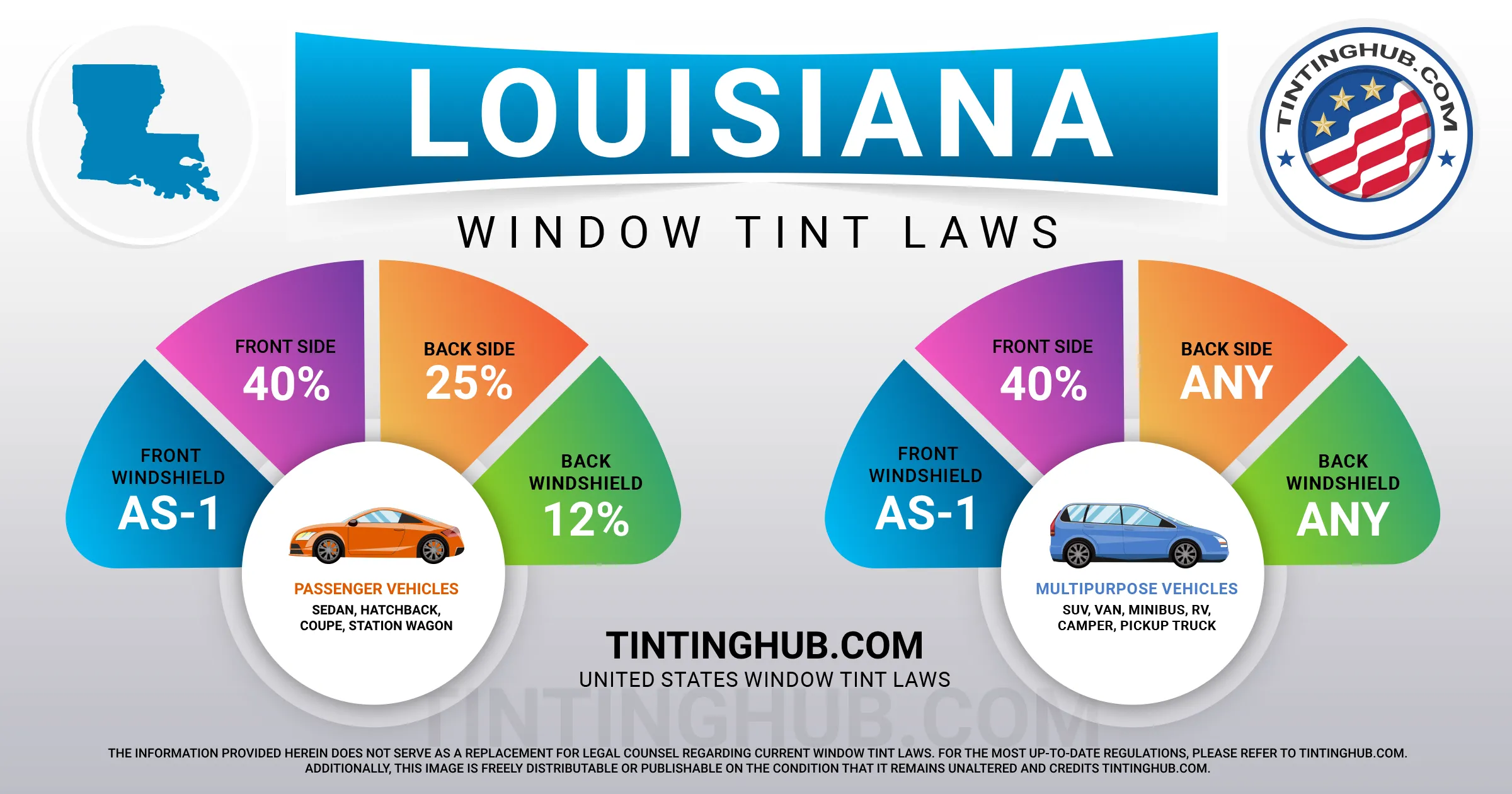Louisiana Window Tint Laws (Last Update 2024)

Car window tinting laws in Louisiana have been in effect since 1993. If you’re a car owner in the Pelican State, it’s essential to know the regulations regarding window tinting. We’ve compiled all the information you need, from permissible darkness levels to reflection standards. Read on to ensure your vehicle complies with Louisiana’s window tinting laws.

Window Tint Darkness in Louisiana
In the world of car window tinting, darkness is measured by VLT, which stands for Visible Light Transmission. Louisiana has precise VLT percentages that differ for sedan cars and SUVs or vans.
Tint Darkness for Sedans
- Windshield: Non-reflective tint is allowed above the manufacturer’s AS-1 line or the top 5 inches.
- Front Side Windows: Must allow more than 40% of light to pass through.
- Back Side Windows: Must allow more than 25% of light to pass through.
- Rear Window: Must allow more than 12% of light to pass through.
Tint Darkness for SUVs and Vans
- Windshield: Non-reflective tint is allowed above the manufacturer’s AS-1 line or the top 5 inches.
- Front Side Windows: Must allow more than 40% of light to pass through.
- Back Side Windows: Any level of darkness can be used.
- Rear Window: Any level of darkness can be used.
Window Tint Reflection in Louisiana
Tinted windows can reflect incoming light, reducing glare and heat. Louisiana law permits a specific window reflection percentage.
Tint Reflection for Sedans
- Front Side Windows: Must not be more than 20% reflective.
- Back Side Windows: Must not be more than 20% reflective.
Tint Reflection for SUVs and Vans
- Front Side Windows: Must not be more than 20% reflective.
- Back Side Windows: Must not be more than 20% reflective.
Other Louisiana Window Tint Rules and Regulations
Apart from darkness and reflection limits, Louisiana has additional laws related to window tinting. Here are some important regulations you should be aware of:
1. Side Mirrors: There are no specific restrictions on side mirrors.
2. Restricted Colors: Red or amber tints are not permitted.
3. Certificates: Manufacturers of window film must certify their products for sale in the state. Ensure your dealer uses certified film.
4. Stickers: A sticker is required to identify legal tinting, and it should be placed between the film and the glass on the driver’s side window.
5. Medical Exceptions: Louisiana law does not allow any medical exemptions for special tint.
6. Penalties: Violating tinting laws can result in penalties, starting at $150 for the first offense, $250 for the second offense, and $350 for subsequent offenses.
Keep in mind that while these are the statewide regulations, interpretations may vary by county or place of residence. Therefore, it’s advisable to double-check this information with your local DMV or law enforcement authorities to ensure you’re in compliance.
We last updated our information on window tint laws in Louisiana in 2023. If you find any discrepancies or outdated information, please feel free to contact us. We aim to provide accurate and up-to-date information to help you navigate Louisiana’s window tinting laws effectively.